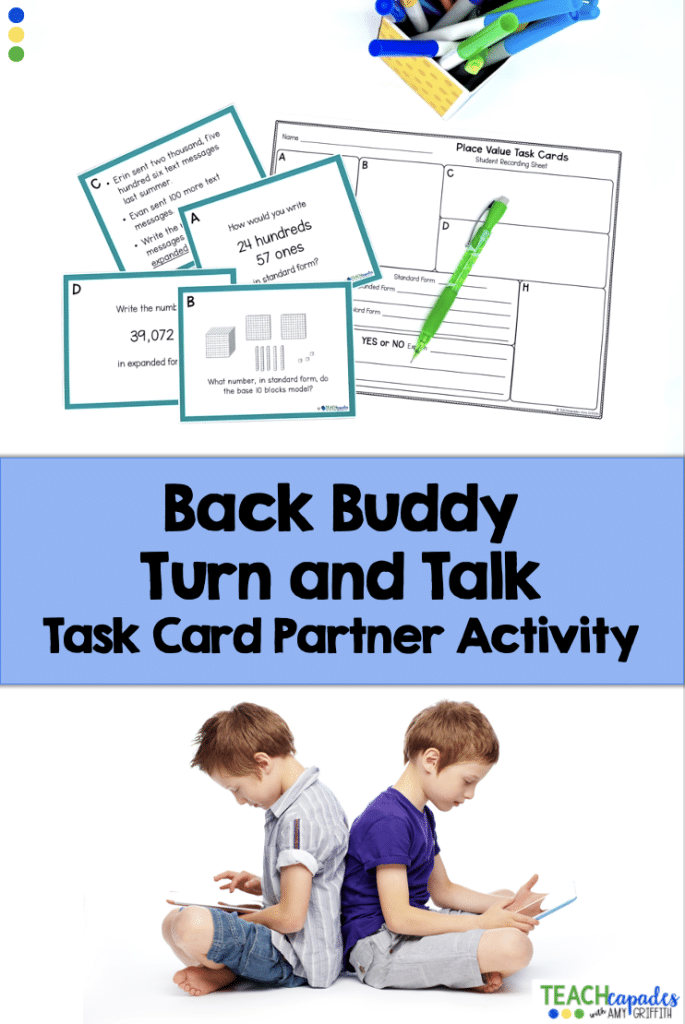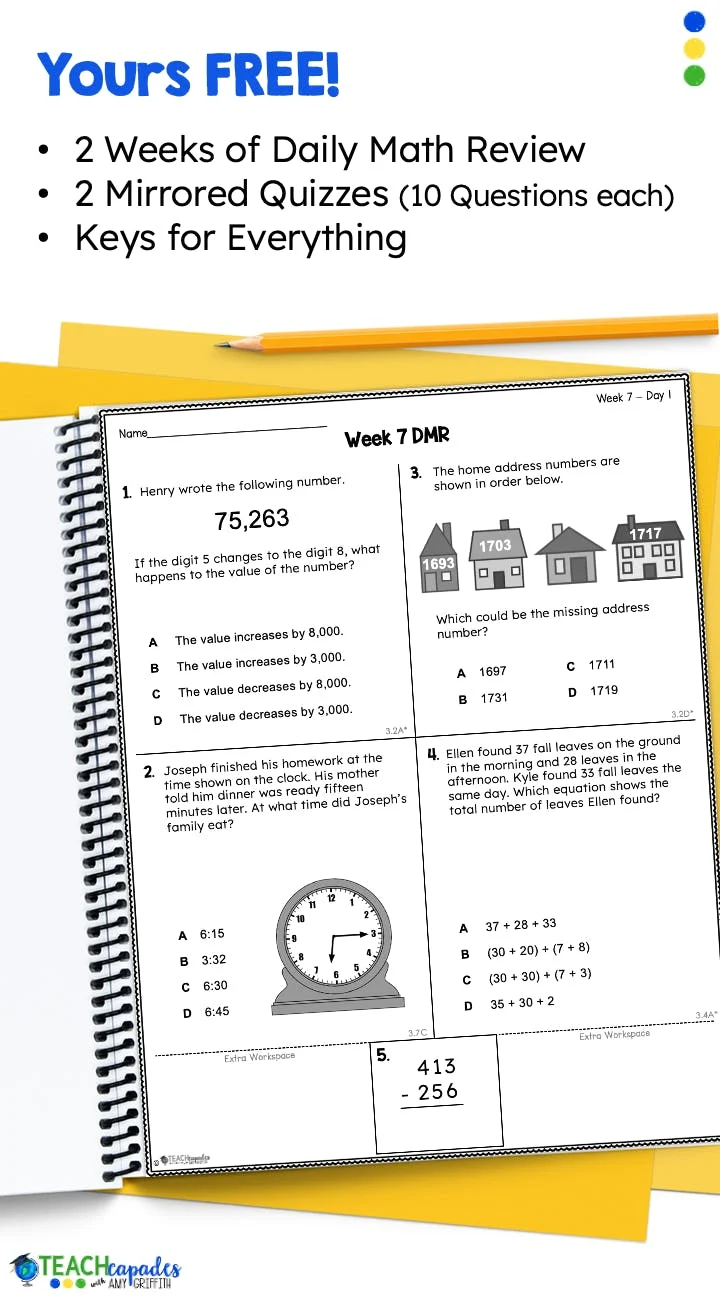As an upper elementary math teacher, you know that keeping students engaged in the classroom can be challenging. Partner activities are a fantastic way to create an interactive learning environment, and when combined with task cards, they become even more effective. In this blog post, we’ll explore the “Back Buddy Turn and Talk” task card partner activity to boost student collaboration, critical thinking, and problem-solving skills in your math classroom.

The Power of Partner Activities
The Power of Partner Activities
Partner activities in the classroom have many benefits. They encourage collaboration, improve communication skills, and offer a supportive learning environment. When students work together, they can explain concepts to each other in ways that make sense to their peers, reinforcing their own understanding in the process. Moreover, it creates a sense of teamwork, making math lessons more enjoyable and less intimidating for many students.
Why Task Cards Matter
Task cards are an excellent tool to make math lessons more interactive and hands-on. They present students with bite-sized problems or questions, offering focused practice on specific skills. Task cards are versatile, easily adaptable to various learning styles and can be used in numerous ways in the classroom. One of the most effective methods that gives students instant feedback is the Back Buddy Turn and Talk partner activity.
What is “Back Buddy Turn and Talk” partner activity?
“Back Buddy Turn and Talk” is a collaborative partner activity that encourages students to work together to solve and discuss task cards. In this setup, students are paired up, and sit back to back. Each student has their own task card and will individually work the problem on the card. After they are finished, they whisper “finished” to their partner. When both students have finished they turn and talk, discussing how they solved the problem.
Setting Up the task card partner Activity:
1. Task Cards Preparation: Before implementing this activity, you will need to copy and laminate TWO SETS of task cards on two different colors of cardstock. This provides two identical task cards at each station, one color for each student. Place the pairs of task cards around the room.
2. Buddy Up: Divide your students into pairs. Consider pairing students of different abilities to promote peer learning and collaboration.
3. Instructions: Explain the activity to the class, demonstrating how to be a good “back buddy” and the expectations for working the problem on their own and discussing afterwards. Encourage both partners to discuss their path to solving the task, explaining their thought processes. If they face a challenge, they can work through it together, providing support and clarification. If they disagree on the correct answer, they can come to you for help. When students have finished a task card, they will move to another set of cards that is open. Cards can be worked in any order, as long as students rotate through each set of cards, showing their work as they go.
Benefits of “Back Buddy Turn and Talk” with Task Cards:
1. Increased Engagement: Working with a partner makes math practice enjoyable and less intimidating for students. It shifts the traditional “teacher-to-student” approach to a “peer-to-peer” interaction.
2. Enhanced Communication Skills: Students learn to explain their thoughts clearly and effectively to help their partner solve problems. This encourages active listening and improves communication skills.
3. Collaborative Learning: Collaborating with a peer creates a learning environment where students can learn from each other’s strengths and overcome challenges together.
4. Task Variety: Task cards offer a diverse range of problems, which helps students approach math from different angles and promotes a deeper understanding of concepts.
Task Card Partner Activity for the Win
Incorporating the “Back Buddy Turn and Talk” partner activity with task cards into your upper elementary math classroom can be a game-changer. By encouraging collaboration, critical thinking, and problem-solving skills, this interactive activity keeps students engaged and excited about learning. So, take your students on this math adventure, and watch them grow into confident mathematicians while working together!


